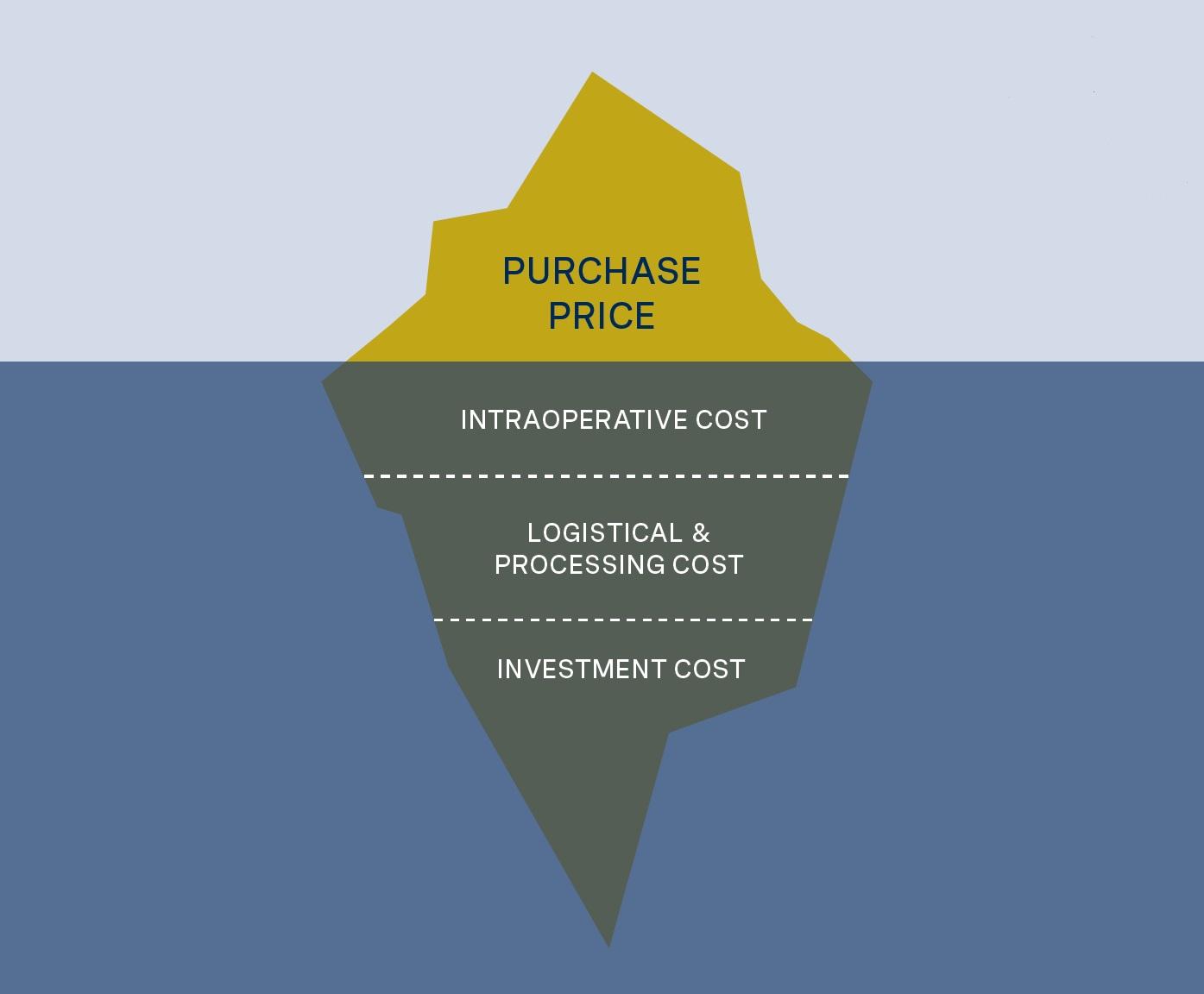The costs of complexity have been widely discussed across different industries. Too much complexity – e.g. in the form of many product variants and thus vast amounts of stockkeeping units (SKUs) – may slow down a company’s production speed, complicate supply chains, and increase overhead. For customers, on the other hand, dealing with a complex offering may result in longer decision-making times, higher logistical costs and a substantially higher administrative effort.
“THE COSTS OF COMPLEXITY ARE HARD TO SEE UNTIL THEY’RE GONE” – Jim Hackett, former CEO of the Ford Motor Company
The problem with trying to put a price tag on complexity, as Jim Hackett aptly states, is that many of the costs it causes are not evident at first sight – unlike the purchase price, which is often the first and only indicator to determine the “value” of a product. But although a lower purchase price may indicate some short-term savings, hidden costs should also be taken into consideration since they can significantly increase the overall cost of a product over its lifetime. We have illustrated this in the well known iceberg model (see illustration): The visible part of the iceberg represents the initial purchase price, while the part submerged underwater consists of the key areas where we believe hidden costs accumulate in orthopaedic trauma.
ECONOMIC BENEFITS OF REDUCING COMPLEXITY
We are convinced that streamlined and simple products are easier to manage, require less training, and can ultimately lead to more efficient surgical procedures and achieve better cost efficiency overall. In the following, we take a quick look at a few distinct aspects in conjunction with our products. Please note that all examples are based on investigations performed in Switzerland.
PURCHASE PRICE
- We provide transparent and consistent pricing across the market.
- Our pricing structure is fair and straightforward for all customers.
- We use attractive discounts/tiers to reward frequent usage of our products and to encourage sustainable long-term business relationships – not as an aggressive sales tactic.
INTRAOPERATIVE COST
- We offer an implant portfolio to cover the majority of fracture patterns with only two core instrument sets (2.5mm/3.5mm) – everything designed to promote simplicity in the OR.
- We are proud of the positive customer feedback confirming the efficient and intuitive handling of our user-friendly implants and instruments.
- Even as our portfolio is growing, we offer a streamlined number of instruments compatible with all Bonebridge implants – to maintain quick set-up times and low error rates.
- We believe in a rapid learning curve and less training requirements due to the repeated use of our streamlined instrument sets on different anatomical locations.
- A comparative study conducted at a Level 1 trauma center in Switzerland demonstrated that the introduction of our CASCELLA 3.5mm Superior Clavicle System led to relevant cost savings based on the use of fewer screws and a lower overall OR time (data available on request).
LOGISTICAL & PROCESSING COST
- Partnering with us results in less inventory on hospital shelves.
- The reduced number of instruments in our sets substantially simplifies manual processing and checking and may reduce error rates in reprocessing.
- We use optimized trays designed for cost-efficient cleaning and sterilization.
- Our systematically conducted interviews with several sterile processing departments in Switzerland reveal that our 3.5mm instrument set (including unsterile screws) costs approx. CHF 80–100.— less per sterilization cycle compared to more complex competitor sets, confirming our commitment to simplicity in instrumentation.
INVESTMENT COST
- We offer consignment to every customer, but are flexible to provide loan kits or buying stock to maximize customer flexibility.
- There is no need for capital expenditure working with us – neither initially nor during the period of operation.
As demonstrated in this article, embracing simplicity in orthopaedic trauma products may yield significant economic advantages throughout hospital operations, ultimately driving overall cost-effectiveness. To learn more about our commitment to “reducing complexity”, visit our Concept page.

